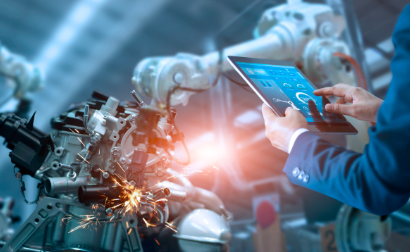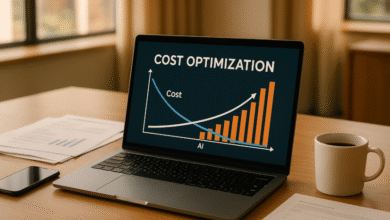The Power of Automation: Transforming Industries in 2025

Automation has become one of the most revolutionary forces reshaping industries worldwide. From manufacturing plants to offices, and even homes, automation is transforming how tasks are performed, improving efficiency, reducing errors, and driving innovation. In this article, we will explore what automation is, the technologies behind it, its benefits and challenges, applications across various industries, and future trends shaping this exciting field.
What is Automation?
Definition and Core Concepts
Automation refers to the use of technology to perform tasks with minimal human intervention. It involves creating systems, processes, or machines that operate independently or semi-independently to complete repetitive, complex, or hazardous tasks. At its core, automation aims to improve productivity, reduce errors, and free human workers from mundane activities.
History and Evolution of Automation
Automation isn’t a new concept—it has evolved significantly since the Industrial Revolution. Early automation relied heavily on mechanical devices and basic control systems. With the advent of electronics, computer control, and robotics, automation has grown more sophisticated, incorporating artificial intelligence (AI), machine learning, and smart sensors, enabling more adaptable and intelligent systems.
Types of Automation
Industrial Automation
Industrial automation focuses on using control systems, such as robots and computer systems, to operate machinery in manufacturing and production environments.
Robotics in Manufacturing
Robots are widely used in assembly lines, welding, painting, and packaging, significantly boosting efficiency and safety by performing repetitive and dangerous tasks.
Process Control Systems
These systems automate processes like chemical production or oil refining by regulating variables such as temperature, pressure, and flow rates, ensuring consistency and safety.
Business Process Automation (BPA)
BPA automates repetitive business tasks such as data entry, payroll, and customer service workflows, often using software like Robotic Process Automation (RPA).
IT and Software Automation
In IT, automation includes automated testing, deployment, and infrastructure management, allowing faster and more reliable software delivery.
Home Automation
Smart home devices automate lighting, security, temperature control, and entertainment systems, enhancing convenience and energy efficiency.
See also: Smart Homes for Sale With Latest Tech Features
Key Technologies Driving Automation
Artificial Intelligence and Machine Learning
AI enables machines to learn from data, adapt to new inputs, and perform complex decision-making, driving smarter automation systems.
Robotics and Mechatronics
Advanced robotics combine mechanical systems with electronics and computing to create versatile, programmable machines capable of complex tasks.
Internet of Things (IoT)
IoT connects devices and sensors, allowing real-time data collection and remote control, essential for modern automated environments.
Cloud Computing and Big Data
Cloud platforms provide scalable computing resources and data storage, enabling advanced analytics and AI integration for automation.
Benefits of Automation
Increased Efficiency and Productivity
Automation accelerates processes, reduces downtime, and allows continuous operation, significantly improving productivity.
Cost Reduction
By minimizing human labor in repetitive tasks and reducing errors, automation lowers operational costs.
Improved Accuracy and Quality
Automated systems perform tasks with precision and consistency, enhancing product quality and reducing waste.
Enhanced Safety
Automation can handle dangerous tasks, reducing workplace injuries and improving overall safety.
Scalability and Flexibility
Automation systems can quickly adapt to changes in production volume or business needs, offering scalability.
Challenges and Risks of Automation
Job Displacement Concerns
Automation can replace manual jobs, raising concerns about unemployment and workforce displacement, requiring reskilling efforts.
Security Vulnerabilities
Automated systems, especially those connected to the internet, face cybersecurity risks that can disrupt operations.
Implementation Costs and Complexity
High upfront costs and technical complexities can be barriers for many organizations adopting automation.
Dependence on Technology
Heavy reliance on automated systems can lead to vulnerabilities if systems fail or are not properly maintained.
Automation in Different Industries
Manufacturing and Automotive
Robotic arms and automated assembly lines dominate production, boosting efficiency and reducing errors.
Healthcare
Automation supports diagnostic tools, patient monitoring, and administrative processes, improving care quality.
Finance and Banking
Automated trading, fraud detection, and customer service bots streamline financial operations.
Retail and E-commerce
Inventory management, order processing, and personalized marketing use automation to enhance customer experience.
Agriculture
Automated tractors, drones, and irrigation systems optimize farming productivity and resource use.
Future Trends in Automation
Hyperautomation
Combining AI, machine learning, and RPA, hyperautomation aims to automate complex business processes end-to-end.
Autonomous Vehicles
Self-driving cars and drones will revolutionize transportation and logistics.
AI-Driven Decision Making
More businesses will rely on AI for strategic decisions, forecasting, and optimizing operations.
Collaborative Robots (Cobots)
Cobots work alongside humans, enhancing productivity without replacing workers entirely.
How to Implement Automation Successfully
Assessing Processes for Automation
Identify repetitive, high-volume tasks suitable for automation to maximize ROI.
Choosing the Right Tools and Technologies
Select solutions that fit business needs, scalability, and integration capabilities.
Employee Training and Change Management
Invest in workforce training and communication to ease the transition and mitigate resistance.
Measuring ROI and Continuous Improvement
Track performance metrics and continually refine automated processes for better results.
Frequently Asked Questions (FAQs)
What tasks can be automated easily?
Repetitive, rule-based tasks like data entry, scheduling, and routine manufacturing operations are ideal for automation.
Will automation lead to widespread unemployment?
While some jobs may be displaced, automation also creates new roles requiring advanced skills and can improve job quality.
How does automation impact business costs?
Automation reduces labor costs, errors, and operational delays, ultimately lowering overall expenses.
What industries benefit most from automation?
Manufacturing, healthcare, finance, retail, and agriculture are among the biggest beneficiaries.
Is automation suitable for small businesses?
Yes, especially with affordable software tools and cloud services tailored to small business needs.
How can companies secure their automated systems?
Implement strong cybersecurity measures, regular updates, and employee training to protect automated infrastructure.
Conclusion: Embracing Automation for a Smarter Future
Automation is reshaping the world, driving unprecedented efficiency, innovation, and safety across industries. While challenges exist, thoughtful adoption and continuous learning can unlock vast potential. Embracing automation today prepares businesses and individuals for a smarter, more productive tomorrow.




